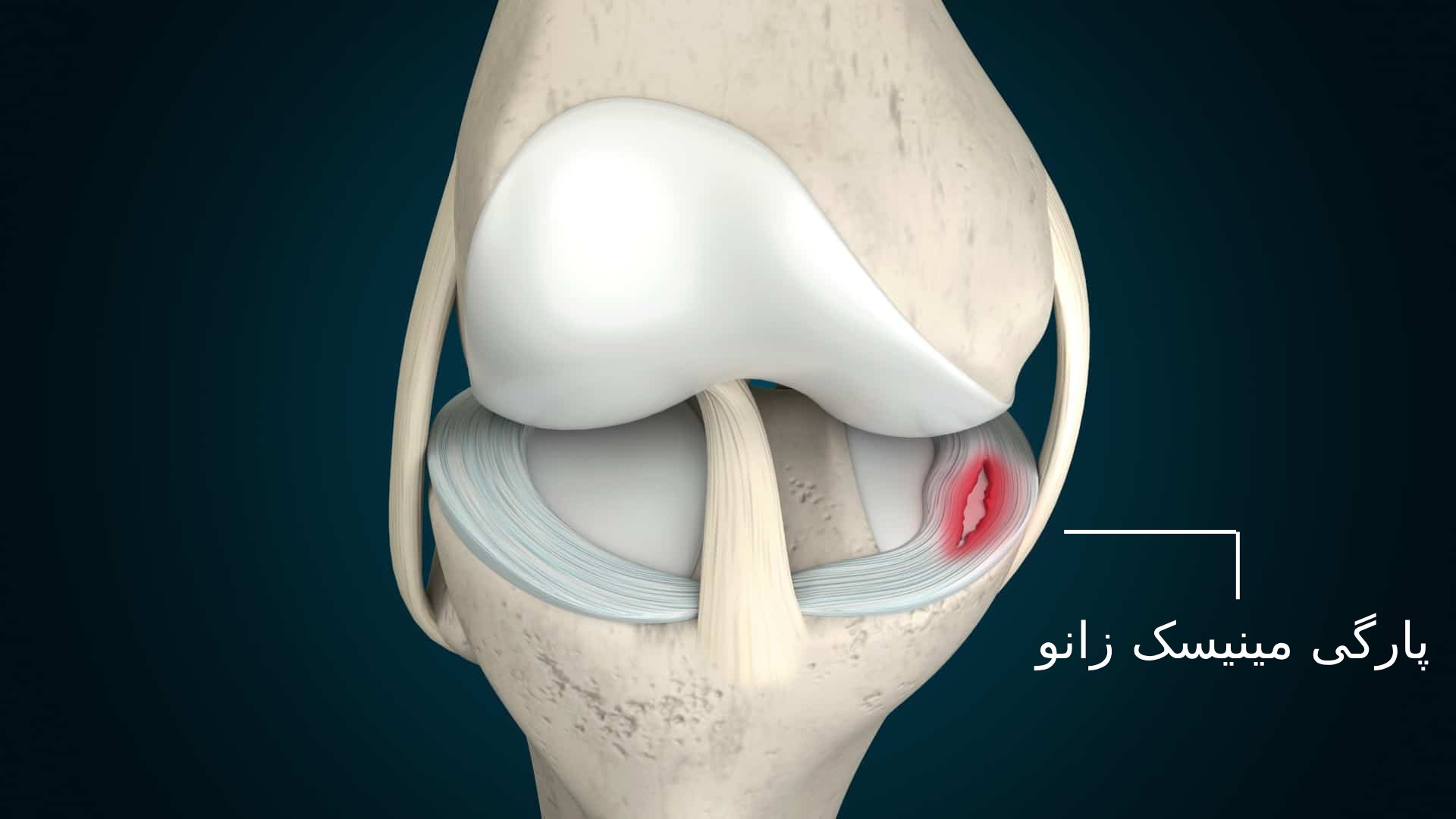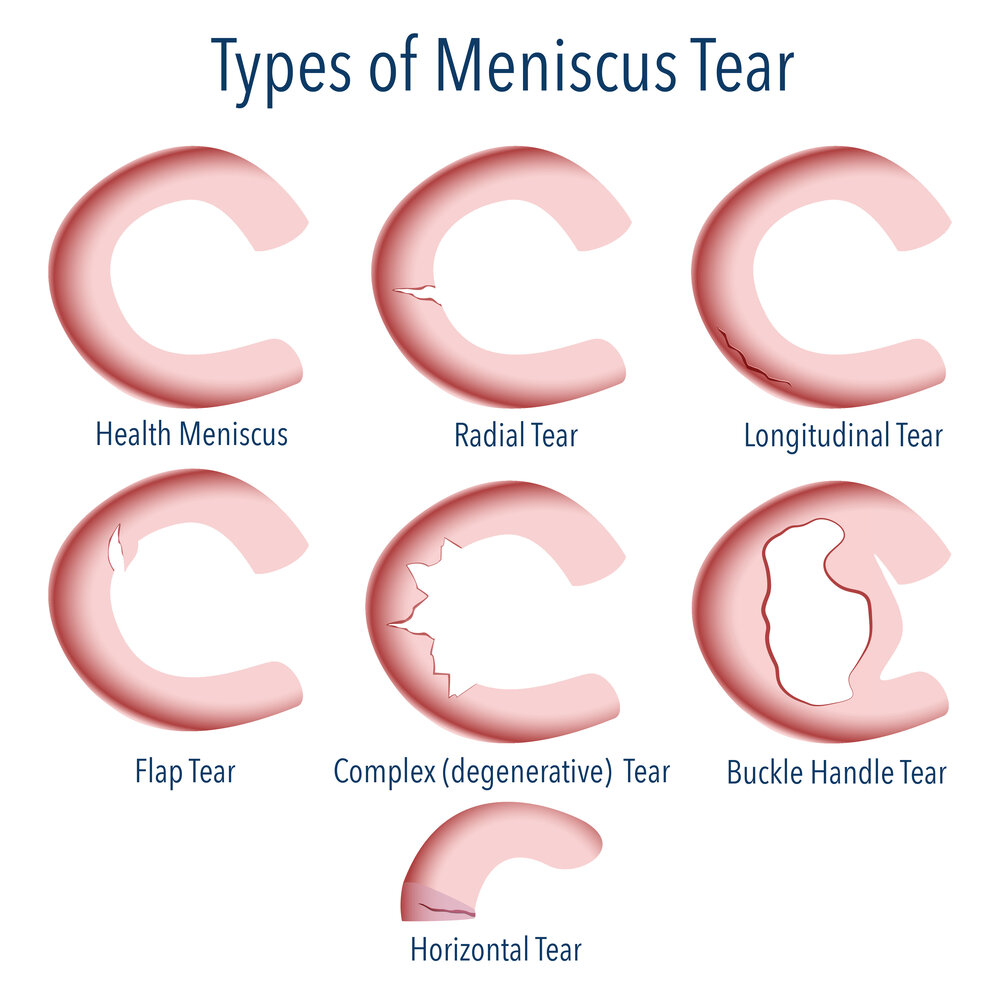Anatomy and Function of the Meniscus

The meniscus is a C-shaped piece of cartilage that acts as a shock absorber and stabilizer within the knee joint. It is located between the femur (thighbone) and tibia (shinbone), and its primary role is to distribute weight evenly across the knee joint, reduce friction between bones, and enhance stability.
Structure and Location
The meniscus is made up of tough, fibrous cartilage that is more flexible than the articular cartilage that covers the ends of the bones. There are two menisci in each knee: the medial meniscus and the lateral meniscus. The medial meniscus is located on the inner side of the knee, while the lateral meniscus is on the outer side. Both menisci are attached to the tibial plateau, the top surface of the tibia.
Functions of the Meniscus, Torn meniscus
- Shock Absorption: The meniscus acts as a shock absorber by distributing the weight of the body across the knee joint. This helps to protect the cartilage and other tissues in the knee from wear and tear.
- Joint Stability: The meniscus helps to stabilize the knee joint by preventing excessive movement and rotation. This is particularly important during activities that put stress on the knee, such as running, jumping, and twisting.
- Lubrication: The meniscus helps to lubricate the knee joint by providing a smooth surface for the bones to move against each other. This reduces friction and helps to prevent wear and tear.
Medial vs. Lateral Meniscus
The medial and lateral menisci differ in shape, size, and function.
- Shape: The medial meniscus is C-shaped, while the lateral meniscus is more oval-shaped. This difference in shape is related to their respective functions.
- Size: The medial meniscus is larger and thicker than the lateral meniscus. This is because the medial meniscus is more closely attached to the joint capsule and has a greater role in stability.
- Function: The medial meniscus is more prone to injury than the lateral meniscus due to its shape and location. It is more tightly attached to the joint capsule and is subject to greater forces during knee movement. The lateral meniscus, with its more mobile nature, is less prone to injury.
Causes and Mechanisms of Meniscus Tears

Meniscus tears are a common knee injury that can occur due to a variety of factors, including sports injuries, degenerative changes, and trauma. Understanding the causes and mechanisms of these tears is crucial for effective diagnosis, treatment, and prevention.
Sports Injuries
Sports injuries are a major contributor to meniscus tears, particularly those involving twisting, pivoting, and sudden changes in direction. The meniscus is particularly vulnerable during activities that place stress on the knee joint, such as landing from a jump, changing direction quickly, or twisting the knee while bearing weight.
- Contact Sports: Football, basketball, soccer, and hockey are examples of contact sports where forceful impacts and collisions can lead to meniscus tears.
- Non-Contact Sports: Even non-contact sports like running, tennis, and skiing can cause meniscus tears, especially if proper form and conditioning are not maintained.
Degenerative Changes
As we age, the meniscus can naturally wear down and become more susceptible to tearing. This process, known as degeneration, can be exacerbated by factors like obesity, repetitive stress, and previous injuries. Degenerative meniscus tears often occur gradually and may not be associated with a specific event.
Trauma
Direct trauma to the knee, such as a fall or a car accident, can also cause meniscus tears. These tears often involve a significant force that disrupts the integrity of the meniscus.
Mechanisms of Injury
Meniscus tears typically occur due to specific mechanisms of injury, which involve forces that exceed the capacity of the meniscus to withstand stress.
- Twisting: A common mechanism involves twisting the knee while the foot is planted, such as when pivoting or changing direction quickly. This can cause the meniscus to tear as it is compressed and sheared.
- Pivoting: Similar to twisting, pivoting movements can also put significant stress on the meniscus, especially when combined with weight-bearing. This can lead to a tear as the meniscus is stretched and compressed.
- Direct Impact: A direct blow to the knee, such as from a fall or a collision, can cause a tear by directly impacting the meniscus.
Symptoms and Diagnosis of Torn Meniscus
:max_bytes(150000):strip_icc()/meniscusfinal-01-5c8fba21c9e77c00010e96f5.png)
A torn meniscus can cause a variety of symptoms, ranging from mild discomfort to severe pain and instability. Understanding these symptoms is crucial for prompt diagnosis and appropriate treatment.
Common Symptoms of a Torn Meniscus
The following are some of the most common symptoms associated with a torn meniscus:
- Pain: Pain is often the most prominent symptom of a torn meniscus. It can be sharp, stabbing, or dull, and may worsen with activity, especially twisting or pivoting movements. The pain is usually located in the knee joint, often on the inside or outside of the knee, depending on the location of the tear.
- Swelling: Swelling in the knee joint is another common symptom of a torn meniscus. This swelling is usually caused by fluid buildup in the joint, which can be triggered by the injury or by inflammation in response to the tear.
- Clicking or Popping: Some people with a torn meniscus may experience a clicking or popping sensation in their knee, especially when bending or straightening the leg. This sound is often caused by the torn meniscus fragment moving within the joint.
- Locking: A torn meniscus can also cause the knee to lock or catch, making it difficult to fully straighten or bend the leg. This occurs when a piece of the torn meniscus gets trapped between the bones of the knee joint.
- Stiffness: A torn meniscus can lead to stiffness in the knee joint, making it difficult to move the leg freely. This stiffness may be more noticeable in the morning or after periods of inactivity.
Diagnostic Methods for a Torn Meniscus
Diagnosing a torn meniscus typically involves a combination of physical examination, imaging studies, and sometimes arthroscopy.
Physical Examination
A thorough physical examination is the first step in diagnosing a torn meniscus. The doctor will ask about the patient’s symptoms, medical history, and how the injury occurred. They will then perform a physical examination to assess the knee joint’s range of motion, stability, and tenderness.
Imaging Studies
Imaging studies can help confirm the diagnosis and identify the location and severity of the tear. The most common imaging studies used to diagnose a torn meniscus are:
- X-ray: While an X-ray can’t directly visualize the meniscus, it can rule out other conditions like fractures or arthritis.
- Magnetic Resonance Imaging (MRI): MRI is the gold standard for diagnosing meniscus tears. It provides detailed images of the soft tissues in the knee joint, including the meniscus. MRI can help identify the type, location, and size of the tear.
Arthroscopy
In some cases, an arthroscopy may be necessary to confirm the diagnosis or to perform surgery to repair the torn meniscus. Arthroscopy is a minimally invasive procedure that uses a small camera and surgical instruments to visualize and repair the inside of the knee joint.
Types of Meniscus Tears
Meniscus tears can be classified into different types based on their location and shape:
- Longitudinal Tears: These are the most common type of meniscus tear. They run vertically along the length of the meniscus, like a lengthwise tear in a piece of paper.
- Radial Tears: These tears radiate from the inner or outer edge of the meniscus toward the center, like spokes on a wheel.
- Flap Tears: These tears involve a large portion of the meniscus that has been torn away from the rest of the meniscus, creating a flap of tissue.
So, you’ve got a torn meniscus, huh? Ouch! Well, at least you’re not the only one with a bum knee. Remember how the Vikings lost their starting quarterback to a season-ending injury? That’s when they really needed to check out the Vikings depth chart and see if they had any backups who could step up.
But I guess you’re more concerned with your own knee, and who can blame you? That’s got to be a real pain in the… well, you know.
So, you’re telling me you tore your meniscus? Ouch! That’s gotta hurt. Reminds me of that time JJ McCarthy went down with a knee injury – talk about a tough break! You can check out his stats here , but let’s be real, a torn meniscus is no joke.
Time to get that knee iced and maybe watch some football to take your mind off it!
